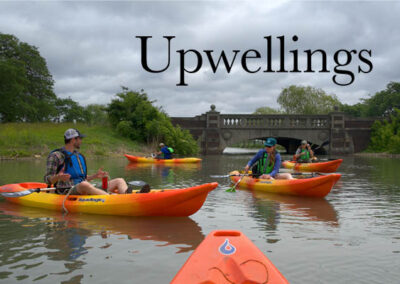Citizen scientists collect valuable information to be used by researchers, policy-makers and natural resources managers.

Iowa State University student field technicians sample a lake in Iowa for the state’s water quality monitoring program. Photo: Daniel Kendall, Iowa State University, Agriculture Communications
Michigan has a lot of inland lakes: 6,531 lakes 10 acres or larger, 2,649 are isolated with no streams flowing into or out of them, and the rest have some kind of stream flowing out or in, with all of them draining to the Great Lakes basin (Soranno et al. 2017). Residents of Michigan, especially those who live on lakes, are curious about the quality of water and food webs of their inland lakes. Because of their interest, residents often participate in opportunities such as Michigan State University Extension’s Introduction to Lakes Online educational program, volunteer water quality monitoring programs such as MiCorps Cooperative Lakes Monitoring Program, or aquatic habitat improvement projects using Michigan Department of Natural Resources’ inland lake habitat viewer.
With all this lake monitoring data, one might ask…what happens to it? The data are used in a variety of ways. A team of researchers led by MSU professors Patricia Soranno and Kendra Spence Cheruvelil recently published findings from a big data project funded by the National Science Foundation that combined lake water quality monitoring data from 17 Midwestern and Northeastern states. This effort produced the lake multi-scaled geospatial and temporal database called LAGOS-NE, and is the first effort so far to combine water quality data from thousands of lakes and their surrounding landscapes. Large-scale data on a variety of lake water quality and landscape parameters helps advance freshwater conservation in an era of rapidly changing conditions. A large percentage of the data in this database was collected by citizen volunteers who play a critical role in ensuring our important freshwater resources are monitored.
LAGOS-NE is a publically accessible database that is available for informing research, policy, and management. Researchers might use the database to explore shifting patterns in species distribution or drivers of lake change. Policy-makers might use results from the database to inform lake specific nutrient standards or a dashboard of ecosystem services. Natural resource managers might use the database to prioritize areas for habitat conservation initiatives.
The next time you enjoy fishing, swimming, or boating on any of the 50,000 mid-western or northeastern inland lakes, think about how big data and citizens have joined forces with computer sciences and aquatic ecology. If you do not already participate in a volunteer monitoring programs, consider making 2018 your year to contribute local water quality data. In addition to providing information about the local waterways important to Michigan, these data are also important for global freshwater sciences.
Registration is open for MSU Extension’s next Introduction to Lakes Online session. The class will be held Jan. 23–March 9, 2018. Registration deadline is Jan. 16, 2018.


